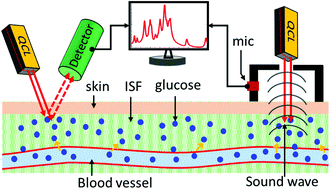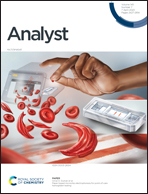Noninvasive blood glucose detection using a quantum cascade laser
Abstract
A Quantum Cascade Laser (QCL) was invented in the late 90s as a promising mid-infrared light source and it has contributed to the fields of industry, military, medicine, and biology. The room temperature operation, watt-level output power, compact size, and wide tuning capability of this laser advanced the field of noninvasive blood glucose detection with the use of transmission, absorption, and photoacoustic spectroscopy. This review provides a complete overview of the recent progress and technical details of these spectroscopy techniques, using QCL as an infrared light source for detecting blood glucose concentrations in diabetic patients.



 Please wait while we load your content...
Please wait while we load your content...